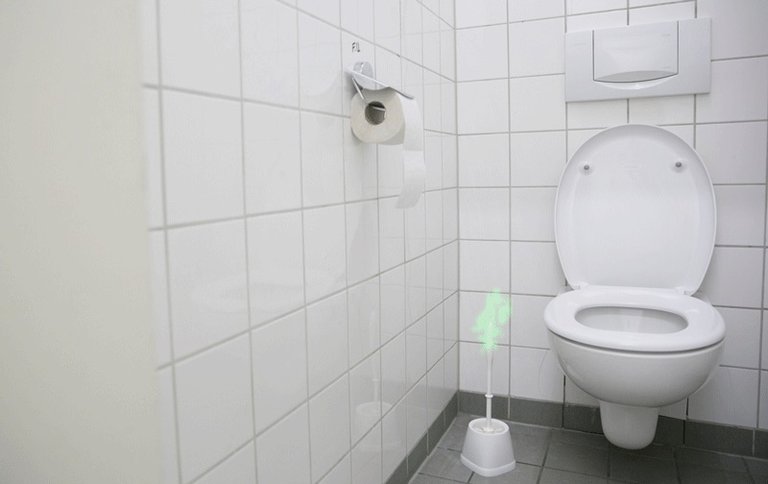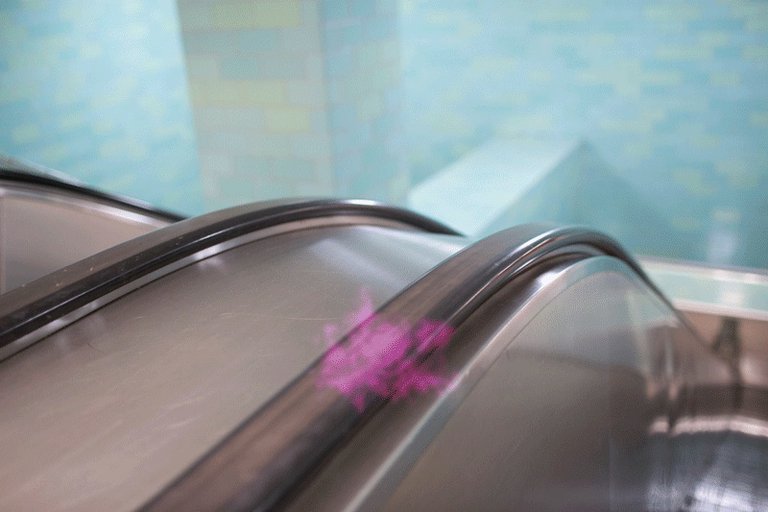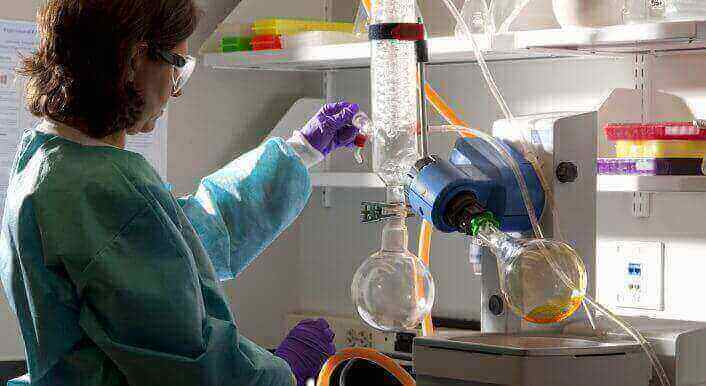Deadly Superbugs
Each year, thousands of Germans die from superbug-infections. The reasons: too many antibiotics, poor hygiene, political reluctance. And the numbers are growing. Scientists caution that a tsunami is coming our way, a disaster “greater than climate change”. Regardless, those involved do nothing but shift blame – almost no one is willing to fight the superbugs with full force. We show that there are already many more incidents than officially reported. And we are launching a long-term international investigation. For this, we need your help.

Andreas H. is 49 when he is admitted to the Helios-Clinic in Duisburg. The doctors suspect cancer and remove a part of his pancreas, puncturing his abdominal wall in the process. Six weeks later, Andreas has undergone twelve operations. The wounds won’t close anymore, his body is riddled with holes like a sieve. Andreas H. dies with the multi-resistant pathogens MRSA, VRE, and ESBL in his blood. Antibiotics – normally the magic weapon against pretty much anything – didn’t stand a chance against these superbugs.
In October 2012, 71-year-old Christel B. is lying in the intensive care unit of the hospital Philippusstift Essen-Borbeck. Her diagnosis: grave inflammation of the pancreas, caused by a moving gallstone. After three surgical procedures within three days, she has caught MRSA. Two weeks later, Christel B. is dead.
Rainer F. has a serious smoker’s lung, he can hardly breathe. The doctors at the hospital perform a tracheotomy. „Without complications“, states the record. But Rainer F. contracts MRSA, shortly after that with the intestinal pathogen VRE. A few days later, he suffers a septic shock, then his heart gives in. At 57.
And then there’s Matthias Sammer. At the height of his career in 1997, the professional soccer player has surgery on his left knee, once again. This time it only involves a small crease which is corrected. Everything went well, promises the professor at the Martin-Luther-Hospital in Berlin. But a few hours later, Sammer’s knee begins to hurt and swell. Back at home, a fever erupts. The doctors don’t have an explanation: it just can’t be. A second examination of Sammer’s knee leaves them speechless: they’ve never seen something like this before. And once again they claim to have no idea where it came from.
Sammer spends three weeks in a hospital in Dortmund. His life is at stake. „The doctors had serious talks with my wife. She only told me about them much later. All alternatives where equally horrible. That I could become well again was the least likely.“ The germs raged through the soccer player’s body and no antibiotic could help. Then came one last hope, one last antibiotic. And it worked. It saved Sammer’s life.
That was 1997 and it was the end of Matthias Sammer the soccer player, at 30 years of age. To date, he can’t jog, says Sammer; even a job as a coach would be hard, two hours of training daily, too problematic. Today, Sammer is the athletic director of the FC Bayern Munich.
Why is Matthias Sammer speaking out about his terrible infection? „It was that final antibiotic which saved me. I don’t want to produce headlines, that’s the last thing I want. But I’m talking to you because I want people to know about my experience. Maybe it can help others.“

Every year 7500 to 15 000 people die from infections, says the German Ministry of Health. That’s higher than all drug and alcohol-related deaths combined – terrible news in itself. But the official numbers should be much higher.
The ZEIT, ZEITonline, the FUNKE Media Group and CORRECTIV have collected and evaluated the billing data of all German hospitals. The data shows that doctors have invoiced one of the most common superbugs MRSA, ESBL or VRE over 30 000 times in deceased patients in the past year. Whether all of these people actually died as a direct result of their infections can’t be conclusively determined. But experts are certain that the number of infections is much higher than the Ministry of Health admits.
“We have at least one million infections and more than 30 000 to 40 000 deaths, probably many more“, says Professor Walter Popp, Vice President of the German Society for Hospital Hygiene. During the past year, Popp and his colleagues publicly questioned the official numbers. Pope writes that the Ministry of Health numbers are much too low and are „based primarily on studies that where conducted almost 40 years ago.“
A majority of the superbugs aren’t just ignored in the invoicing process, they’re not even noticed. Hospitals aren’t required to report every case of MRSA. According to the Infection Protection Act, only MRSA infections that are detected in blood or spinal fluid samples by labs have to be reported to the RKI. In addition, only certain risk groups are tested for these superbugs upon entering a hospital, leaving many infections undetected.
- Multi-resistant pathogens are bacteria that are difficult or impossible to treat with antibiotics. The more antibiotics are used, both in quantity and strength, the more these resistances develop. Doctors differentiate between carriers and infected people. Carriers have been colonized by germs on their skin or their mucosa. An infection occurs when germs enter the bloodstream. The result: inflammations and blood poisoning. Particular groups are especially vulnerable: people who often undergo hospital treatment, who require intensive care, who often use antibiotics, who have catheters, chronic wounds or burn injuries.
- The most well-known multi-resistant pathogen is MRSA – a methicillin-resistant staphylococcus aureus. At this point, around every fifth German carries the germ on their skin. Symptoms are wound infections and respiratory or blood inflammations. Scientists differentiate between livestock germs (la-MRSA), hospital germs (ha-MRSA) and germs in the general public (ca-MRSA). Around ten epidemic strains have been found throughout Germany.
- VRE are vancomycin-resistant enterococci. These germs are naturally found in people’s intestinal flora. When too many antibiotics are used, only resistant enterococci will survive. This can lead to wound and urinary tract infections, to abscesses or heavy infections. Patients with weak immune systems are especially vulnerable.
- ESBL refers to extended-spectrum beta-lactamase. These are enzyme that make antibiotics ineffective by splitting them. ESBL building bacteria are resistant against a lot of antibiotics.

There are few reliable numbers out there. Each statistic tells a different story. And in light of the increasing number of infected people, the people in charge remain stumped. „I wouldn’t know how we could possibly record all germs. There are so many people out there who are carriers“, says Susanne Glasmacher, spokesperson for the Robert Koch Institute.
A first step would be to at least record all infections centrally. But this only happens in the case of MRSA, „since we have an obligation to report“, says Glasmacher. In contrast, the even more dangerous intestinal pathogens VRE and the enzyme-building bacteria ESBL don’t have to be reported. Most of the time, they are only treatable with special last-resort antibiotics. Especially very young, old, and weak patients die due to these superbugs. And they are rapidly spreading through Germany year by year.
German hospitals have invoiced VRE over 33 000 times in the year 2013. This includes patient infestations as well as actual infections. The group of ESBL-bacteria were even invoiced over 120 000 times, 50 percent more often than four years ago. The most widespread germ in Germany is still the methicillin-resistant staphylococcus aureus (MRSA), which is registered in German hospitals over 140 000 times each year.
However, experts such as Bernd Beyrle from the Techniker Krankenkasse (TK), a statutory health insurance provider, are certain that these numbers are much too low. Beyrle is in charge of the inpatient division at the TK. „Not every infection is relevant for invoicing. Therefore, we can assume that only a third of all infections and infestations can be identified in this data.“
Without an amendment to the Infection Protection Act by the Ministry of Health, the poor data basis likely won’t change. But a legal reform doesn’t seem to be on the political agenda. The ministry writes that „several specialized instruments for the identification of multi-resistant pathogens“ exist and that the inspection of these is a „permanent task“. In other words: everything is great, no need for action for the time being.
These are unparalleled chaotic circumstances for such a controversial subject matter.
When analyzing the invoicing data of health insurance providers county by county, it quickly becomes clear that the common MRSA superbug is especially prevalent in the northwest of Germany, especially in Lower Saxony where huge fattening stables of the animal industry are located. The intestinal germ VRE and the bacteria group ESBL are spread more evenly, with hotspots in middle and eastern Germany. This roughly corresponds to the observations of the experts who have spent years researching the matter.
The invoicing data of the health insurance companies doesn’t provide any clues for the reasons behind this dispersion. But it does show the magnitude and extent of the problem.
Multi-resistant pathogens in hospitals
MRSA questionnaire
What the data doesn’t show: the suffering that victims and their relatives must face. For that reason we want to hear from you. Do have experience with hygiene problems at hospitals or in other health facilities, with infections and multi-resistant germs? Fill out our questionnaire – the more people participate, thing more we make ourselves heard, the more will be done about these problems.
The questionnaire helps us collect your experiences. When we publish the results we will cooperate with various media outlets, including local media. We hope people will share the questionnaire.
If you want to talk to other people affected by this issue, you can join our Facebook group. We use it as a forum to discuss, share information and advice and let people know with whom can get in touch. You can sign up here.

The Deceased
Andreas H. is operated on for the first time on November 30th, 2011. His doctors suspect cancer, the head surgeon removes the left part of his pancreas. During the difficult operation, his abdominal wall is punctured. A week later, Andreas suffers a perforation of the stomach. The next procedure follows, 48-hours later another. Tracheostomy, artificial respiration. Peritonitis.
It’s Christmas and Andreas is back on the operating table every two days. Parts of his stomach are removed, including the spleen. A problem: the doctors can’t close his wounds. After the procedures, body fluids enter his abdomen.
One time, over 0.3 liters of milky fluid comes out at once. And the leaks just continue to grow. Time and time again, the doctors attempt to stitch him back up.
“Due to the initial operation, this surgical step is proving difficult“, states the record of the fourth operation. At this time, the patient still has seven more operations to go. Open the stomach, suck out the fluids, rinse, close the stomach. After a procedure spanning three hours, a chief resident notes under P.S.: „Due to the many previous operations, this procedure was conducted under extremely complicated conditions“. When the lesion will no longer close, the doctors turn to glue.
After a dozen procedures within six weeks, Andreas H.’s stomach is porous like a sieve. „Every sip that he took ran directly back out of him and into bed“, remembers his mother. But her son wants to live. His weak body wants to fight. Slowly, very slowly, things are looking up. The patient is transferred from intensive care to the general ward.
“In four weeks I can leave this place“, says Andreas H. on March 17th, 2012. It’s his 50th birthday. What his friends and family have to endure in the next three months, they will never forget.
Once, they are greeted by the smell of excrements when entering the room. Andreas H. is lying in his own tarry stool, blood running from his mouth. He is unable to make himself heard.
His mother and brother are „completely shocked“. They run to the nursing staff to ask for help. Sure, later, right now she has to distribute dinner in the station, says one nurse. After distribution, the nursing staff begins to collect the dishes. Only then do they attend to Andreas H. and clean him up.
It soon becomes clear: Andreas H. has been infected with vancomycin resistant enterococcus (VRE). The multi-resistant intestinal bacteria, which can only be combatted with two types of antibiotics, are detected in his blood.
Family members begin to intervene. It’s the mother, a former nurse with over 26 years of experience, who saves Andreas from suffocating during an episode of respiratory distress. A spell of pneumonia and an impending ulcerous lesion are only looked into at the urge of the family. The protective clothing required for those in contact with open wounds is seldom worn by the staff, disregarding hospital policy. The brother complains, asks for „the care and monitoring required for recovery“, and demands „continuous monitoring through a senior physician“.
The mother slowly begins to lose hope. „Eventually, in the face of his ongoing agony, I said my goodbyes to Andreas“, she explains.
On the morning of June 21st, 2012, when the news of his death reached her, „I was simply relieved that God had put an end to this“.
At the time of his death, Andreas is carrying the multi-resistant superbugs MRSA, VRE, and ESBL in his blood. This is the case for more and more people. And the doctors and hospitals are partly to blame.

The Doctors
There are two things that make it possible for these superbugs to spread in the first place, to settle down in our midst, to kill more and more people. Number one: too many antibiotics. Number two: poor hygiene. Let’s start with the medication. The mechanism is simple. Inherently, every living being also carries some resistant pathogens during an infection. They develop accidentally through natural mutation. When antibiotics are prescribed, these resistant germs are suddenly at an advantage compared to their non-mutated relatives. The more often antibiotics are prescribed, the more carelessly they’re swallowed, the higher the chance that these resistant germs will multiply and spread – making the antibiotics ineffective.
That’s why it’s so important that antibiotics are only handed out extremely responsibly. Doctors should be required to create an antibiogram before prescribing anything in order to test what a patient reacts to. It should be better monitored and recorded which patient receives which antibiotic for which problem. There should be an antibiotic passport, similar to vaccination records, but for antibiotics. And it should be centrally recorded how many antibiotics are prescribed and for what. To improve usage, to curb it. All these measures currently do not exist.
Even Georg Baum, managing director of the German Hospital Federation, demands restrictive guidelines for antibiotic therapies, already common in neighboring Holland, as well as a prescription register.
All of this should prevent these superbugs from developing. To keep them from spreading, doctors, nurses, and medical aides have to strictly abide by hygiene guidelines. They have to properly disinfect their hands, for example. This doesn’t happen nearly enough. Roughly two-thirds of all patients contract infections in hospitals. Studies show that doctors and nurses disinfect their hands only half as often as necessary. This is a huge problem because hospital germs spread mostly thanks to the staff itself.
In a hospital in northern France, scientists from Lyon equipped around 450 patients and 350 nurses with sensors which recorded every contact with another person. In the course of nine months, the scientists where able to compile a contact profile of the entire hospital. At the same time, they took weekly samples from the nasal mucous membrane and let a lab test them for bacteria.
“There’s no such thing as an isolated room in a hospital. All bacteria can spread to all rooms and stations“, says the leading scientist Eric Fleury. After only a few days or weeks in the hospital, many patients had bacteria in their blood or mucous membranes that patients from other stations had dragged in. Thirty percent of patients were contaminated with multi-resistant pathogens by the end of their stay. „Almost every patient comes into contact with germs from other patients through nurses, medical aides, and doctors.“ The bacteria are spread through the entire building by contaminated lab coats, dirty hands, and serving trays. Nurses meet in the cafeteria and exchange the bacteria on their skin through shared water bottles and hello kisses. During the night, nurses and doctors often have to tend to several floors at once. „Almost everyone has contact with everyone“, says Fleury. A nurse has contact with around 100 people a day.
Of all things, the hospital staff thus becomes a safety hazard for its own patients. Some epidemiologists such as the Parisian researcher Didier Guillemot even go as far as declaring doctors and nurses „superspreaders“ – as „the largest possible circulator“ of the deadly superbugs. They can only protect their patients by better sterilizing their hands and instruments, such as blood pressure gauges or bandage trays. Guillemot also advocates only letting essential personnel have access to a patient – not entire teams, just the attending physician and as few nurses as possible should make rounds. Single rooms can also protect against high bacteria traffic.
In order to improve disinfection practices, some hospitals in Holland have video cameras above their dispenser. Just one example that coerces doctors into actually using them. In Germany, hospitals only voluntarily take part in studies on the rate of disinfection. An external control mechanism, for example through unannounced random sampling, does not exist.
It’s important for doctors to sterilize their hands before coming into immediate contact with a patient. Not in the hallway, not after a procedure, but directly next the bed of the patient. Patients can demand this on their own.
- Don’t panic: Multi-resistant pathogens aren’t an invisible danger, but a daily companion. The problem must be treated visually. It’s not a crime to talk about it.
- Before you stay: Before going into the hospital for treatment you can inform yourself about hygiene. Try the German Society for Hospital Hygiene, the Clean Hands Campaign or – if you want expert knowledge – the RKI’s KRINKO guidelines.
- In the hospital: When you go into the hospital, inform yourself about hygiene measures. Ask for flyers and information about proper hand disinfection. Let your visitors know.
- Make yourself known: Ask for the nurses or medical aides who are in charge of hygiene in your unit. Make yourself known.
- Self-desinfection: Wash your hands as often as possible. Disinfect your hands. Pay attention to the disinfectant’s minimum contact time. Count slowly to 30. That ensures for the disinfectant’s maximum effect.
- General desinfection: Make sure there’s disinfectant in your room. That increases that possibility that disinfectants will be used.
- Check doctors and medical aids: Pay attention to medical aides and doctors. They should always disinfect their hands immediately before touching you. This is especially important before and after interventions under the skin.
- Cleaning: Make sure that cleaners don’t use utensils that were previously used in isolated rooms.
- Clean bed: Insist that you are given fresh sheets several times a week and that the surroundings are kept clean. Everything that you can reach from your bed should be cleaned every day.
- Fresh air: Make sure to air out. That can help against germs. Even the World Health Organization recommends natural ventilation.
- The proper antibiotics: Only take antibiotics when absolutely necessary. Antibiotics are often unnecessarily prescribed. If you need to take antibiotics, never end the treatment early – always take your medication as directed. Taking antibiotics incorrectly can foster the development of multi-resistant germs.
- Monitor your own isolation: Do you carry MRE or are you infected? Ask for flyers about dealing with the germ. Observe the correct measures of disinfection and isolation. Let your visitors know about the problem.
Another possible way to contain the superbugs: screening every single patient for multi-resistant pathogens upon entering the hospital, as is done in Holland. Just one of the reasons why our neighbors have hardly any more MRSA patients.
Georg Baum, managing director of the German Hospital Federation, says that the German clinics would like to screen every new patient for pathogens. But in order to do this, the Robert Koch Institute would have to expand the circle of patients it screens. And the health care providers would have to pay. Baum says such measures could cost up to a billion Euros.
“In some cases we still have rooms with three or four beds and one toilet“, says the hospital representative. His clinics don’t even receive half of the six billion Euros which are „generally recognized“ to be necessary. Baum says that an investment program for prophylaxis would be helpful. He criticizes that clinics, doctors and the agriculture industry don’t work together against the problem. Instead, they try to blame the superbug problem on each other.
It’s true that not only hospitals are to blame for the prevalence of deadly bacteria. We must also look to veterinarians and the intensive use of antibiotics in industrial livestock farming. Gerd-Ludwig Meyer sees this more and more often in Nienburg, a town in southern Lower Saxony. Year after year he is losing hope.
The animals
“You see how a person suffers. And you can’t do anything, not anything.“ Gerd-Ludwig Meyer runs a dialyses practice with several other doctors. He tells us about an old lady whose urinary tract infection didn’t improve through treatment, but kept getting worse and worse. Meyer prescribed the first antibiotic – no reaction. He prescribed the second antibiotic, the third, the fourth, the fifth: Gentamicin. Tetracyclin. Ciprofloxacin. Amoxicillin. Over twenty in all. Nothing helped. After terrible days of agony the old lady had to die. Her death is one among many. Four more patients died in Meyer’s practice only in the past months. With all four of them antibiotics showed no effect. „It’s a shitty feeling when you’re helpless as a doctor“, says Meyer. He likes to express himself directly, is a man who makes things clear. First he was a farmer. As the oldest son he took over the family farm. Then that world became too small for him. He finished school and studied medicine.
Meyer’s hair is shaggy, his life is reflected in his face. He explains how he has recently noticed that more and more patients need to be isolated due to infection with bacteria that don’t react to antibiotics. And that farmers are not only pig or turkey breeders, but high-risk patients. „When a farmer comes into a clinic, they basically need to go straight into quarantine.’
By Meyer’s perception, this began around four or five years ago. He was quick to realize the invisible connection between his two jobs: farming and being a doctor. The connections are called Cephalosporine, Fluorchinolone, Colistin or Carbapeneme. These are the names of reserve antibiotics, the last medicine that can be used against multi-resistant bacteria in our bodies. The last medicine that can kill these superbugs. But doctors and farmers use the same substances: on sick humans and on livestock.
What Meyer found in Nienburg is happening more and more frequently throughout Germany. Doctors at the University Hospital Münster have found that in regions marked by livestock farming, almost 80 percent of farmers are affected by superbug colonization. They carry the germs on their skin; the germs can enter the bloodstream through a wound or during surgery.
Doctors note that more and more people are becoming infected with a strain of MRSA used in pig farming called CC398. According to a study that is yet to be published, over 30 percent of patients infected by germs have a pig germ in their body. This is a significant increase from previous studies. The problem: many of these patients have had no direct contact with animals. Accordingly, the germ is already spreading in the population. And people are starting to die from it.
At a conference in October the doctors from Münster described a patient who lived on a pig farm. She died three weeks after a simple injection to the shoulder. The resistant germ CC398 had infected the heart. Another member of a family of pig farmers had a septic shock after a lung transplant and died due to organ failure. Doctors suspect that a relative brought the pig germ into the hospital and infected the patient.
In Denmark at least five people have died in recent years due to germs from pig farms. Authorities confirmed four cases in court, a further case was discovered this fall. The victims: a 51 year old patient with blood poisoning, a 63 year old dialyses patient, an 86 year old diabetes patient and a 74 year old resident of a nursing home who contracted pneumonia.
None of the people who died in Denmark had a direct connection to pigs.
Experts are observing the same situation in Germany. „We have also found the germs in people who were not involved in livestock farming. The resistant superbug must already be spreading among the population“, says Karsten Becker, senior physician at the University Hospital Münster, in conversation with the Swiss newspaper Sonntagsanzeiger.
In Germany more pig farms are infected with the resistant germ than in any other European country. According to the most recent studies, up to 70 percent of farms are contaminated in some regions. Compared to other European countries, Germany is the fifth largest user of antibiotics in meat production. By the kilo, German farmers pump 60 times more antibiotics into animals than the Norwegians. A breeding ground for resistant germs.
This massive dispensing of medication is provoked by a structural deficiency. In veterinary medicine doctors are not only doctors, but also pharmacists. They profit from prescribing antibiotics to animals in large amounts. Farmers call the larger practices highway vets – they drive from farm to farm selling their products instead of examining and healing animals.
While 26 percent of ecologically bred pigs are hosts to MRSA, scientists at the TH Hannover university found that 92 percent of conventionally bred pigs had the germ in their noses. And this development continues. In the past 25 years, the number of farms in Germany has decreased from almost 700 000 to under 300 000. The number of pig fattening stables, which are especially affected by these germs, has even decreased by 80 percent according a recent report from the Ministry of Agriculture.
All this fosters the development of resistant animal germs. And they jump back onto people.
Studies show that germs are even found more and more often in frozen supermarket meat. Some of the scientists who deal with these developments only handle their chicken filets in the kitchen with rubber gloves to prevent infection.
“In some regions around ten percent of patients are bringing animal germs into hospitals“, says Michael Kresken. For Kresken this development is alarming. He must know: the professor has studied resistant germs for over half his life.

The Future
When Michael Kresken began his life’s work over three decades ago with his former boss, his colleagues laughed at him. Studying the resistance of bacteria against antibiotics? What good could that do? The numbers where insignificant at the time and most people didn’t expect them to increase. Most doctors followed the slogan: the more the better. Antibiotics were the silver bullet. When Michael Kresken now talks about the time when antibiotics were still used for prophylaxis, he speaks as a highly respected expert on multi-resistant pathogens. Based at the Bonn-Rhein-Sieg University in Rheinbach, the professor writes up everything to do with resistances every two years in a report entitled „Germap“. The prevalence of dangerous pathogens has steadily increased in recent years. Kresken says that something must be done.
“The effectiveness of antibiotics wears down when they are used. The more antibiotics we use, the more we select resistant strains and foster their circulation“, says Kresken. „These medicines have significantly increased our life expectancy. They’re a resource that we must protect.“
Experts are especially worried about the rarest resource, the reserve-antibiotics. „General practitioners and internists use too many broad spectrum antibiotics. That’s especially noticeable in comparison to other countries“, says Kresken. Broad spectrum antibiotics remove everything, making it easy for doctors – but they also help resistant pathogens. If the toughest antibiotics are used to treat small infections, there is little left to fight multi-resistant superbugs that don’t react to other types of antibiotics.
Wolfgang Witte, 69, was the director of the national staphylococci reference center at the Robert-Koch-Institute for many years and is a leading expert on MRSA in Germany. He is a microbiologist, a scientist of the old school; a slender and careful man. A visit to his office at the Robert Koch Institute in Wernigerode turns into a microbiological history lesson as he talks about great teachers and scientists. He cites one of them: „Bacteria always have the last word.“
He says that antibiotic-resistant germs are a significant threat that we must face with scientific reason. He sees little value in human doctors and veterinarians blaming each other. Witte wants to maintain an overview of the situation and see where the real dangers are. We have to monitor how the pathogens evolve. How they jump between humans and animals. The dangerous animal germs originally came from humans.
If this continues the pathogens will evolve in the animals and develop new properties: they could spread quicker and increase infections. They would come back to humans even more dangerous. According to Witte, this could lead to a „microbiological apocalypse“ if pathogens emerge that no medicine can treat. „If that happens, God help us.“
If antibiotics are no longer effective we return to the Middle Ages where a tooth or bladder infection can kill a person. The suffering we would face without antibiotics is inconceivable, for instance in the case of a sepsis. First comes the fever, followed by the shivers. The blood vessels expand, the heartbeat increases, the skin can turn yellow or blue, blood ceases to clot, and finally blood runs out of all orifices. Necroses form at the extremities, the organs start to fail.
Such times might be closer than we think. In January 2014 the German Federal Risk Assessment Office reported for the first time that a new form of E. coli bacteria had been found in three pig fattening stables and in one chicken farm that are even resistant to reserve antibiotics of the carbapenem group. Carbapanems were seen as the last hope. The fact that new pathogens are resistant to carbapenems is bad news.
And who is at fault?
Everyone.
The meat industry points to the hospitals, berates the insurance companies, the government and the doctors until the problem shows up again. Hospitals neglect hygiene, insurance companies don’t pay, laws are not harsh enough, doctors are ill informed and factory farmers pump antibiotics into their animals by the ton. Those are the allegations. But little is changing.
Pathogens develop in cozy and dark conditions. It doesn’t look like pathogens will get uncomfortable in Germany anytime soon.
Many of the dangerous germs are not even recorded at a national level. There is no central register for multi-resistant superbugs. While germs spread across international borders, the fight against them is largely organized at a state level in Germany. Hospitals only participate voluntarily in studies that the Federal Ministry of Health cites.
And it’s difficult for anyone who want to shed a light on this situation. Nobody is allowed to know how many infections there are in which hospitals. The hospitals are fighting tooth and nail against stricter inspections. For the germs, the situation remains the same: cozy and dark.

What can be done?
A view across the border.
Holland: every patient is screened for multi-resistant germs before they are admitted to a hospital, if necessary they are isolated and given special treatment. As such, MRSA is barely an issue in Holland.
Denmark: A law is in planning that will prohibit children’s excursions to pig farms, even though MRSA is much less prevalent in Denmark than in Germany.
USA: In September US President Barack Obama signed an order to undertake a number of measures. This includes an improved national surveillance system and a 20 million dollar prize for the development of a rapid test for dangerous pathogens.
France: Every year all hospitals undergo a deep 14-day investigation conducted by a team of ten people. As a result, lengthy reports are published on the internet that provide grades for individual units ranging from A to F. Bad results can shut down a hospital.
Quality reports for German hospitals are practically worthless. The hospitals fill these out themselves and most reports claim flawless standards.
The hospital invoices that we analyzed for this investigation could be used to improve the quality of the health system. „The goal must be to publicize this data for every hospital“, says Bernd Beyrle, head of in-patient care at the Techniker Krankenhause insurance company.
“Analyzing this data is a first step to gaining an understanding of the magnitude of this situation“, says Beyrle. The Institute for Health Quality which the federal government is currently establishing plans to pick up on this.
According to Beyrle, Germany needs „proper hospital inspections like they have in France. Whoever remains below standard should receive a warning or even be removed from the market.“
People can die in hospitals, they say. That’s the way it is. But that’s what they used to say to women giving birth. Until Ignaz Philipp Semmelweis came up with the idea that doctors should wash their hands before moving to the next patient.
Hygiene is key in the fight against infectious diseases. Along with reducing the use of antibiotics. If everyone would participate in the fight against deadly superbugs, patients like Andreas H., Christel B. and Rainer F. might still be alive today.
CORRECTIV proposes:
Infection surveillance and control should be centrally organized by the federal government at an infection agency. Pathogens don’t respect state borders. This central agency should not only monitor MRSA infections, but also look at VRE, ESBL and other dangerous pathogens.
Following the French example, hospitals should undergo independent inspections. Every unit should be evaluated individually. This could be done using a grade system from 1 to 6 as in schools. The results should be published on the internet. If necessary, hospitals with bad grades should receive warnings or units should be shut down.
The results of these inspections, including the relevant data and documents, should be made available online as quickly as possible and should be transparent to the public. The general public should know if a hospital has serious problems with infections and receives a hygiene grade of 5 or 6.
Steal our Story
Help yourself! CORRECTIV is a non-profit newsroom. We want to uncover wrongdoing to change society for the better. To achieve this goal, we need as many people as possible to read our stories. Therefore we are happy if you make use of our stories by taking, republishing or sharing them. It doesn’t matter if you’re a local blog, an online-platform, a newspaper or a radio station: take it, for free. There is only one condition: We want you to notify us at info@correctiv.org. That’s important for us and our supporters. If you have a question, don’t hesitate to contact us via E-Mail. Thanks!
In Charge: David Schraven
Editorial Staff: Annika Joeres, Benedict Wermter and Daniel Drepper, in cooperation with ZEIT, ZEITonline and FUNKE media group
Database Development: Stefan Wehrmeyer
Questinnaire Development: OpenDataCity
Header Animation: Ivo Mayr
Art Direction: Thorsten Franke / mediaPolis
Realisation: Mr. Jet Lag



